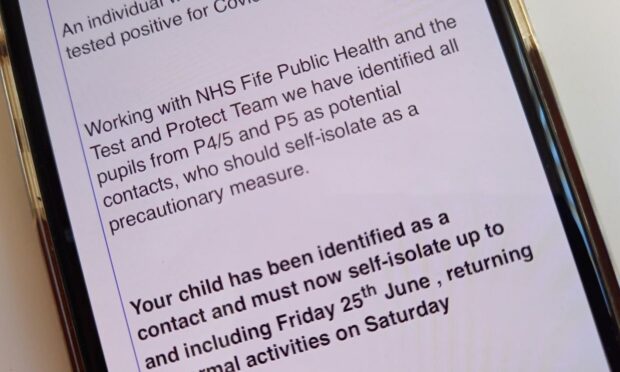With school bubbles scrapped this term parents may be wondering what will happen if there’s a Covid case in class.
Schools will no longer ask entire classes or year groups to isolate when one child tests positive for the virus.
Instead, more targeted contact tracing is to be conducted which should see fewer pupils asked to isolate and for shorter periods.
What is the procedure?
When a child or young person in school tests positive for Covid-19 only those contacts identified as at the highest risk of infection will be contacted by Test and Protect and asked to isolate.
- Close contacts aged five to 17 will be required to take a PCR test and can end their isolation if it is negative
- Children under the age of five will not need to isolate unless they are symptomatic and are not required to but will be encouraged to take a PCR test
- Parents/carers of all other children in the class, year or nursery group will be sent a ‘warn and inform’ letter.
New guidance for schools published by the Scottish Government sets out arrangements for contact tracing for this term which started last Wednesday in Angus and this week for Dundee, Fife, Perth and Kinross.
It was released as lockdown rules were lifted and self-isolation rules altered.
Who is a close contact?
In deciding who is a close contact the guidance states that Test and Protect will focus on identification of households, overnight (sleepover) or clear, prolonged close contacts.
Schools and nurseries will no longer be so closely involved in contact tracing.
The guidance states: “The approach of requiring whole classes or groupings of pupils to self-isolate as close contacts will no longer be followed in normal circumstances.”
What about the rest of the class?
Those deemed lower-risk contacts in school will be given public health advice on being vigilant for symptoms of the virus and adhering to risk reduction measures.
Warn and inform letters will go to staff and parents and carers of those in relevant classes or year groups when the school is made aware of a positive case.
They will advise recipients that if symptoms develop the person must self-isolate and book a PCR test immediately.
Bubbles, the guidance states, are no longer required in school and should be removed as soon as possible, at least within four weeks of the start of term.










